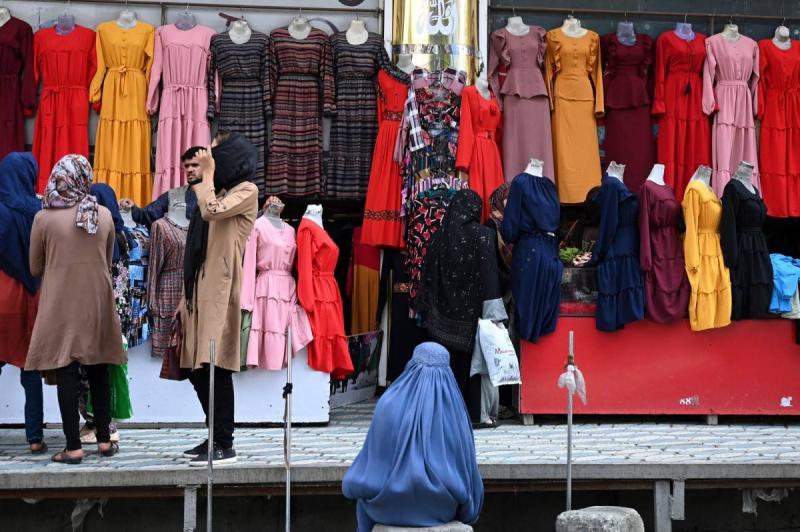Under the title "What Will the Taliban Do with a $22 Billion Economy?", Bloomberg Ashraq published an article by Bobby Ghosh, noting that as soon as the Taliban seized Kabul, questions began to arise about how to manage the Afghan economy. Do the rebels-turned-rulers possess the necessary skills for management, such as a modern Ministry of Finance and a central bank? Will foreign donors trust them regarding aid delivery? Can they engage with investors interested in the country’s mineral wealth?
**Taliban Resources**
For two decades in the wilderness, the Taliban demonstrated their ability to generate resources to sustain their insurgency, mainly from the drug trade, illegal mining, and donations from supporters abroad, but also from taxes and rents in areas under their control. In good years, Taliban revenues exceeded $1 billion. However, the Afghan budget is more than five times that amount.
**External Support**
The country's GDP, estimated at about $22 billion, has nearly tripled since the Taliban were ousted from power in 2001. For several years, Afghanistan's economy has been unstable, supported by foreign aid. According to World Bank estimates, three-quarters of the government's budget is funded by international donors, led by the United States. The management of this economy was handled by a group of Afghan technocrats, many of whom received education or training in the West. Few of them are expected to remain in the country, despite the Taliban's promise of "amnesty" for anyone who worked with the ousted government. Thus, the most pressing economic challenge for the new rulers is the massive skills shortage in ministries and government departments. The Taliban will struggle to find ministers and administrators whom foreign donors and investors can trust.
**International Restrictions**
Currently, donors or new investors are unlikely to trust the Taliban anyway. The Biden administration has frozen $9.5 billion in Afghan central bank assets and halted cash shipments to the country; European governments have stopped their development aid. The International Monetary Fund has also halted access to special drawing rights for Afghanistan. Western governments, multilateral agencies, and donor organizations will impose strict conditions on the resumption of funding. Aid will depend on the Taliban maintaining many freedoms—especially for women—that people gained in their absence, and on preventing the resurgence of terrorist groups like al-Qaeda. Western investors will take their cues from their governments and will pay attention to economic sanctions. They will also be influenced by public opinion in their countries: most American and European companies will be aware of the potential local backlash against doing business, directly or indirectly, with the Taliban.
**Mineral Wealth**
Do non-Western investors feel unencumbered by these considerations? There has been some speculation that China and Russia are eager to fill the gap left by the U.S. withdrawal. Beijing, in particular, is believed to be eyeing Afghanistan's mineral deposits, valued between $1 trillion to three times that. Both Beijing and Moscow have significant security concerns about Afghanistan that would encourage them to engage closely with any Taliban-led government in Kabul, but serious investment is another matter entirely. Chinese banks and companies appear less risk-averse than their Western counterparts, but they tend to be cautious about unstable economies. The experience in Venezuela, where Chinese loans have needed to be renewed merely to avoid massive write-offs, serves as a cautionary tale for investors. Although Beijing has talked a good game about investing in Afghanistan for some years, very little money has materialized. The flagship Chinese project, a $2.8 billion copper mine funded by the state-owned Metallurgical Corporation of China at Mes Aynak, near Kabul, has been stalled for a long time.
**Infrastructure Weakness**
The infrastructure demands for extracting Afghanistan's mineral wealth are immense: for example, the country severely lacks transportation networks. Getting minerals from beneath the ground to China requires investments larger than the Mes Aynak project. Chinese investors have safer options for investing that kind of money. The Taliban may covet Chinese aid, but they will have to compete with governments across the developing world, especially in Africa. Russia is not among the more generous aid donors, ranking behind the wealthiest nations in terms of development aid distribution.
Despite all this, there may be some areas of the Afghan economy that could actually benefit—at least in the short term—from Taliban control. Local businesses that do not rely on foreign investment or external markets may look forward to a relatively stable environment and access to parts of the country that were previously inaccessible due to fighting between rebels and government forces. Those operating in government-controlled areas could feel relieved by the removal of corrupt state officials and police, as well as criminal gangs. The Taliban's brutal style of justice could effectively deter crime. However, not all businesses will benefit; those reliant on female workers, for example, are out of luck. It is only a matter of time before entrepreneurs find themselves forced to pay bribes and protection money to a new set of officials, as the Taliban are skilled in extortion.




